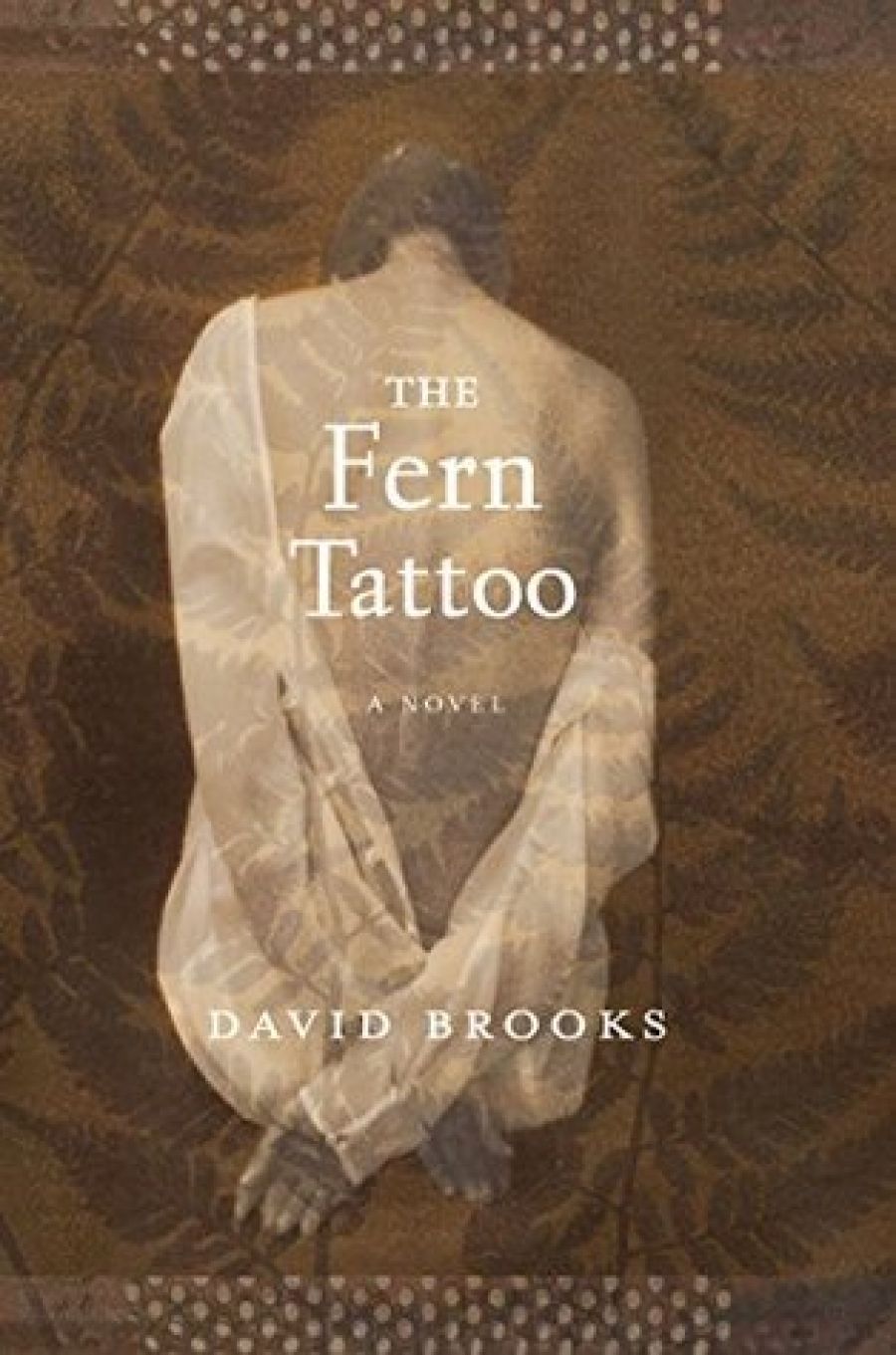
- Free Article: No
- Contents Category: Fiction
- Review Article: Yes
- Online Only: No
- Custom Highlight Text:
In these litigious days, should I declare a tenuous bias in favour of David Brooks (whom I know not at all)? According to an extensive list of previous publications, which includes poetry, short fiction, essays and one earlier novel, he has devoted several editorial enterprises to the poet A.D. Hope. I too admired Hope, for his passionate admiration for Russian literature, which he sometimes lectured on and which made him a complimentary examiner of my own PhD thesis. Otherwise, the slate is blank: I tried to locate Brooks’s previous novel, The House of Balthus (1995) as preparatory reading for this review, but the local library system could not help.
- Book 1 Title: The Fern Tattoo
- Book 1 Biblio: UQP, $32.95 pb, 388 pp
- Book 1 Readings Link: booktopia.kh4ffx.net/qeje5
The allusions seem bent on distancing you, but fortunately there is only a page and half of ‘Proem’, and when the novel proper starts, the style changes immediately to the kind that invites you in. Instead of mystification, there is specificity; the reader has an overpowering sense of being there, of looking directly at a girl, but a different one (the time is now 1887–96), who is herself ‘watching a large, blue-black bird under the spiky bush that had just, in the last few days, burst open at the centre with its tumble of huge, red seeds, hard and shiny as sea pebbles. But the bird was not interested in red things, only blue, and had been collecting them all morning to arrange about the floor of the elaborate nest it had made between the bushes in the flat space near where the gully gave out.’ What brilliance and colour – and what a delightful vignette of a bowerbird.
The girl, Alice, lives with her little brother, her father, and his ‘part-aboriginal drinking-mate mistress’, Mary. The next thirty pages offer an involving account of Alice’s solitary life on the south coast of New South Wales, where a lighthouse is being built by kind Mr Talbot, whose daughter Julia becomes Alice’s best and only friend. The girls fish and hunt together until a tragic accident happens, which grabs you by the throat.
That is, and isn’t, the end of the story. This is a novel structured like a mosaic, each chip, big or little, complete in itself, but deriving its ultimate significance from a larger, as yet undisclosed, scenario. Not until most of the pieces are in place does the overall schema become even half clear, and then you must take a pencil and paper and do a lot of working out yourself, in an effort to give to something resembling a jigsaw puzzle, disordered and fragmentary, the teleology and linearity associated with both history and narrative shape. For although plot, what the Formalists called siuzhet, uses devices such as flashback, flash forward, repetition, circularity, coincidence and so on to create interest, these can usually be disentangled without much trouble and put back together in the chronological but less interesting order called fabula. But in Brooks’s novel, discerning the fabula is a real challenge.
The apparent disconnectedness of the maze of stories might even exasperate, if each fragment were not encompassed by its own logic. Every line, paragraph, page is amazingly believable – amazing because they can also be deeply poetic, surreal or unexpected. Many of the characters engage in highly unusual activities, which nevertheless seem perfectly understandable at the time. Yes, there is a ‘bigamist bishop’, but I never thought of him in such dismissive terms until I read the blurb; and there is, centrally, a librarian, who beneath her unadventurous clothing is covered in tattoos from neck to knee. Inevitably, there is more to the tattooing than meets the eye (but it rarely does, since she dresses demurely most of the time). And there is a character, not a mile away from the narrator, who, even when dead, is assumed by everyone to be the father of a child not his own. Thanks to this and other mind-stretching complications, characters may have multiple surnames, mothers and sisters can become interchangeable, and not all documents are written on paper. You begin to see how the mysteries of the content demanded a less than straightforward form.
Yet while hide-and-seek is a good game, obfuscation is less fun. When the last pages made reference to the ‘unspeakable secret at the heart of it all’, I must confess to feeling unsure whether I had cottoned on to it or not. Back to the pencil and paper, to deal with the lurking fear that some minute detail, the key to the whole puzzle, might have escaped the rush of a first reading. You even wonder whether the game has not gone on a touch too long, the last piece of the mosaic no longer as vital as the author thinks it is. But cast your mind back to the brilliantly persuasive evocation of unusual people and remote places, the sheer audacity of situations simultaneously unpredictable and inevitable. You are then inescapably aware that the writing is simply too masterly not to be, in itself, a spectacular reward.


Comments powered by CComment